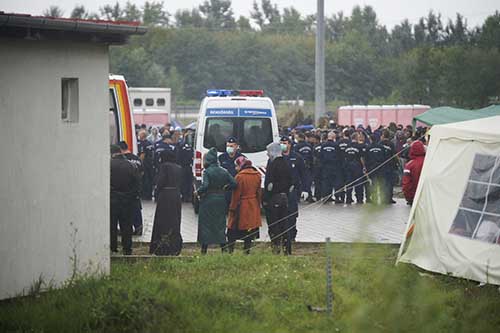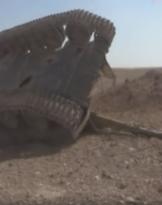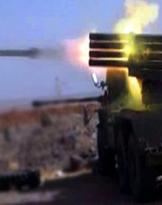The race to identify Hungary as a nest of selfishness and nationalism knows no end. He takes a breath only to point the finger at the latest champion of self-preservation, increasingly on the media pillory: anti-European Britain.
It comes by itself: those who do not flatten themselves to bon ton politician who dispenses convictions and moral acquittals according to a single standard, is placed at the door or rather on the public scaffold.
In Hungary, which had not been mentioned since the time of Puskás, newspapers are now filled. Never in the modern era had there been so much discussion of the Serbian-Hungarian border, which in the face of great historical importance, is difficult to locate even geographically. The reason is simple. If we talk about walls and immigration, the limelight always shines.
The Balkan axis of human trafficking is a full-blown reality. Alongside the Mediterranean motorway that translates millions of poor people, the new way of illegal immigration and the sale of desperation has been consolidated: the one that starts from bucherellata Greece and from the double agent Turkey to enter the European Union from the south east.
What comes directly from Bulgaria and Romania, inside the EU, obviously does not make news. Especially from Bulgaria, which also shares a land border with Turkey (and Asia). Since the passage between the Black Sea and the Adriatic Sea with the Kosovo war, you can count on the connivance of Pristina and Tirana for disturbing Euro-Asian traffic, no one cares that we talk about it. To the indignant eye of the European right-minded, they only import the walls and barbed wire.

Let's see better.
The barbed wire spread over the (scarce) 200 km of the Serbian-Hungarian border has created a political alarm as malicious as it is disproportionate. On the front page there are Szeged (Hungarian Szeged) and the town of Roszke, positioned right on the border but actually a mobile line of millennial geopolitical balances. On fertile plains today the subject of obsessive journalistic attention, for centuries Hungarians, Habsburgs, Ottomans and Serbian princes alternated, now moving their respective spheres of influence below, now above.
The land between Subotica and Roszke is an eternal border, well beyond the current demarcation between Hungary and the Serbian Republic. Were it for this indeed, there would be no particular hostilities, even considering the entry of Budapest into the EU (only 44% of those entitled to vote voted!) And into NATO.
The Serbian province that borders Hungary is Vojvodina, an area with a strong Magyar presence and the cradle of instances of autonomy from Belgrade that have never been denied. There are fewer cultural differences between northern Serbia and southern Hungary than one might imagine. The whole area, extended as far as Transylvania, is part of the European border country which, until the seventeenth century, came to terms with Turkish expansion, often paying the consequences with blood.
To paint the Hungarians as desperate despairers seeking asylum and builders of walls against humanity is historically, morally and geographically ridiculous.
The barbed wire that now runs around the sleepy Tisza river could have been positioned a few hundred kilometers further south, between Serbia and Macedonia or between Macedonia and Greece, without in the least affecting the roots of the reasoning: if Europe wants to exist, it must recognize itself in an identity. Whatever the case, each identity in itself implies the concept of maintenance.

Regardless of the ideal reasons, the Hungarian decision to build a barrier and militarize the border should be read in the light of a practical need. Roszke is connected to the Serbian Republic (Subotica but above all the not so distant and important Novi Sad) with a large highway, a railway and an important tributary of the Danube. The whole region, agricultural and flat, allows rapid movements and easy penetrations without natural obstacles. In the total absence of a common European policy, Budapest merely makes its own. We are indignant about a roll of barbed wire in Roszke, but we fly over the wall between Texas and Mexico in Obama's America. The same America that for security reasons has forced billions of people to redo the passport. The world is strange.
In reality there is more. The reason why Hungary often sits on the dock is essentially political.
Already in the eye of critics for some years, Budapest is guarded special and inserted by default among the rebels to the machine of banking-German integration.
Fidesz and leader Viktor Orban are the antithesis of politically correct European. Not even Haider's Austria managed to make so many enemies.
The "wall" on the border is only the latest of the spurious controversies that have arisen in recent times. More than anyone else, the amendments to the Constitution from 2011 onwards, branded as confessional, clerical and freedmen, have been able to go against the trend of the guidelines of a Europe which, in order not to offend the sensibilities of others, even denies its Christian origins. Policies on marriage, adoption and marital rights have been rejected by European democracies as have the emphasis on the Catholic religion and norms that have outlawed the Communist Party.
It is not just a matter of points of view. Everything should perhaps be read in the light of Hungarian history, which more than others can teach the sense of freedom and the price you are willing to pay to defend it.
In this regard, destiny has its own irony. Just Hungary, which rebelled against the Soviet wagons of the '56, today looks at Putin's Russia with a very strong ideal impetus. Perhaps this is what irritates Brussels the most, worried both as a reference for the European institutions and as a NATO headquarters.
It is impossible not to note, however, that the finger pointed today at Budapest belongs to those who in 56, when Hungary defended freedom of expression and life with blood, turned the other way.
The moral is a periodic train that often runs on a double track.












